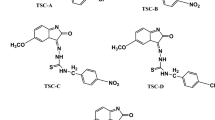Using electronic spectroscopy and quantum chemistry methods, the electronic spectra of vanillic acid in various solvents are interpreted. In the ground electronic state, four protolytic forms of vanillic acid in water were detected: anionic, dianionic, cationic, and neutral. In water, vanillin and isovanillin in the ground state have the same spectral characteristics: the line position and intensity in their absorption spectra coincide. The absorption and fluorescence bands of vanillic acid shift toward shorter wavelengths compared to vanillin and isovanillin. The values of the minimum electrostatic potential indicate that vanillic acid has the deepest minimum in the region of the carbonyl oxygen atom. The study of the fluorescence spectra showed that the radiative properties of the ionic forms of vanillic acid are different. The data of quantum chemical calculations indicate that electronic transitions in the molecule are formed with the participation of charge transfer from the phenyl part of the molecule to the oxygen atoms of the methoxy and carbonyl groups. The presence of OH, OCH3, and carbonyl group in the structure of vanillic acid leads to the existence of a dianionic form, both in the ground and electronically excited states.
Similar content being viewed by others
References
E. P. Feofilova and I. S. Mysyakina, Prikl. Biokhim. Mikrobiol., 52, No. 6, 559–569 (2016).
E. I. Shimanskaya, A. A. Stepacheva, Yu. V. Lugovoi, et al., Naucno-Tekhn. Vestn. Povolzh’ya, No. 5, 99–101 (2015).
K. G. Bogolitsyn, D. S. Kosyakov, N. S. Gorbova, et al., Zh. Fiz. Khim., 82, No. 2, 303–308 (2008).
A. M. El-Toni, S. Yin, and T. Sato, Mater. Lett., 58, 3149–3152 (2004).
O. V. Vusovich, O. N. Tchaikovskaya, I. V. Sokolova, and N. Yu. Vasil’eva, Zh. Ptikl. Spektrosk., 83, No. 1, 13–17 (2016).
C. A. Parker, Photoluminescence of Solutions [Russian translation], Mir, Moscow (1972).
V. Ya. Artyukhov, G. V. Maier, and N. R. Rib, Opt. Spectrosc., 81, No. 4, 553–557 (1996).
V. Ya. Artyukhov, A. I. Galeeva, G. V. Maier, and V. V. Povomarev, Opt. Spectrosc., 83, No. 5, 685–690 (1997).
V. Ya. Artyukhov, G. V. Maier, and N. R. Rib, Opt. Spectrosc., 81, No. 4, 520–523 (1997).
G. V. Mayer, V. Ya. Artyukhov, O. K. Bazyl, et al., Electronically Excited States and Photochemistry of Organic Compounds [in Russian], Nauka, Novosibirsk (1997).
V. Ya. Artyukhov and A. I. Galeeva, Russ. Phys. J., 29, No. 11, 949–952 (1986).
G. P. Yemiş, F. Pagotto, S/ Bach, and P. J. Delaquis, Food Prot., 74, 2062–2069 (2011); DOI: 10.4315/0362-028X.JFP-11-230.
P. Stanely Mainzen Prince, S. Rajakumar, and K. Dhanasekar, Eur. J. Pharmacol., 668, 233–240 (2011); DOI: https://doi.org/10.1016/j.ejphar.2011.06.053.
Author information
Authors and Affiliations
Corresponding author
Additional information
Translated from Izvestiya Vysshikh Uchebnykh Zavedenii, Fizika, No. 8, pp. 95–101, August, 2020.
Rights and permissions
About this article
Cite this article
Tchaikovskaya, O.N., Vusovich, O.V. & Malikov, A.V. Study of the Optical Spectra of 4-Hydroxy-3-Methoxibenzoic Acid. Russ Phys J 63, 1395–1402 (2020). https://doi.org/10.1007/s11182-020-02183-4
Received:
Published:
Issue Date:
DOI: https://doi.org/10.1007/s11182-020-02183-4




